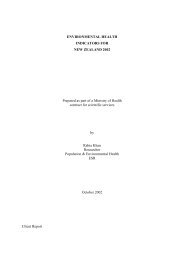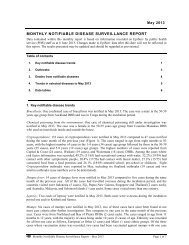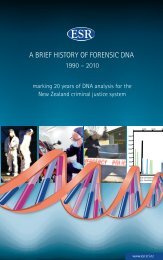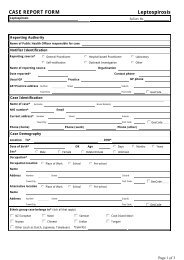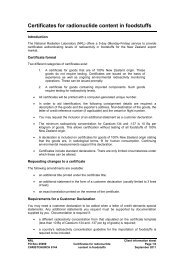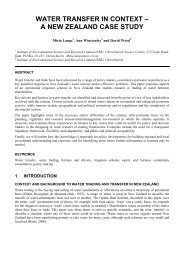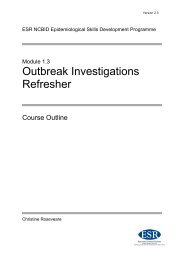Invasive Pneumococcal Disease in New Zealand, 2010
Invasive Pneumococcal Disease in New Zealand, 2010
Invasive Pneumococcal Disease in New Zealand, 2010
Create successful ePaper yourself
Turn your PDF publications into a flip-book with our unique Google optimized e-Paper software.
SUMMARY cont<strong>in</strong>uedThere were no significant regional differences (P ≤0.05) <strong>in</strong> the <strong>in</strong>cidence of IPD <strong>in</strong> <strong>2010</strong>, butwith<strong>in</strong> the Northern region disease rates were significantly higher <strong>in</strong> Counties ManukauDistrict Heath Board (DHB) than <strong>in</strong> the other three DHBs <strong>in</strong> the region.Among the 34 cases who had received ≥1 dose of PCV-7, and for whom the serotype caus<strong>in</strong>gdisease was known, 27 (79.4%) had IPD due to a non-PCV-7 type. Of the seven cases whohad received ≥1 dose of PCV-7 and had disease due to a PCV-7 type, five had serotype 19Fdisease, one had type 6B disease and one had type 14 disease.There has been some <strong>in</strong>crease <strong>in</strong> IPD caused by non-PCV-7 serotypes s<strong>in</strong>ce the <strong>in</strong>troductionof PCV-7. This <strong>in</strong>crease has been predom<strong>in</strong>antly due to serotype 1 disease. An <strong>in</strong>crease <strong>in</strong>serotype 1 IPD was first noted <strong>in</strong> 2007 and appears to have peaked <strong>in</strong> 2009, with the rate oftype 1 disease halv<strong>in</strong>g between 2009 and <strong>2010</strong>. Except for 2009, most of the serotype 1disease has been <strong>in</strong> cases 5-34 years of age. In 2009, this type also became common among<strong>in</strong>fants




